What to Do When Encountering a Moose While Hiking
Many national park visitors are worried about running into a bear or cougar on a trail, but each year more people are injured by moose than bears.
Therefore, it’s important to know what to do if you encounter a moose while hiking. You’ll find everything about moose safety in this blog post!
Moose Safety: How to Safely Hike in Moose Country
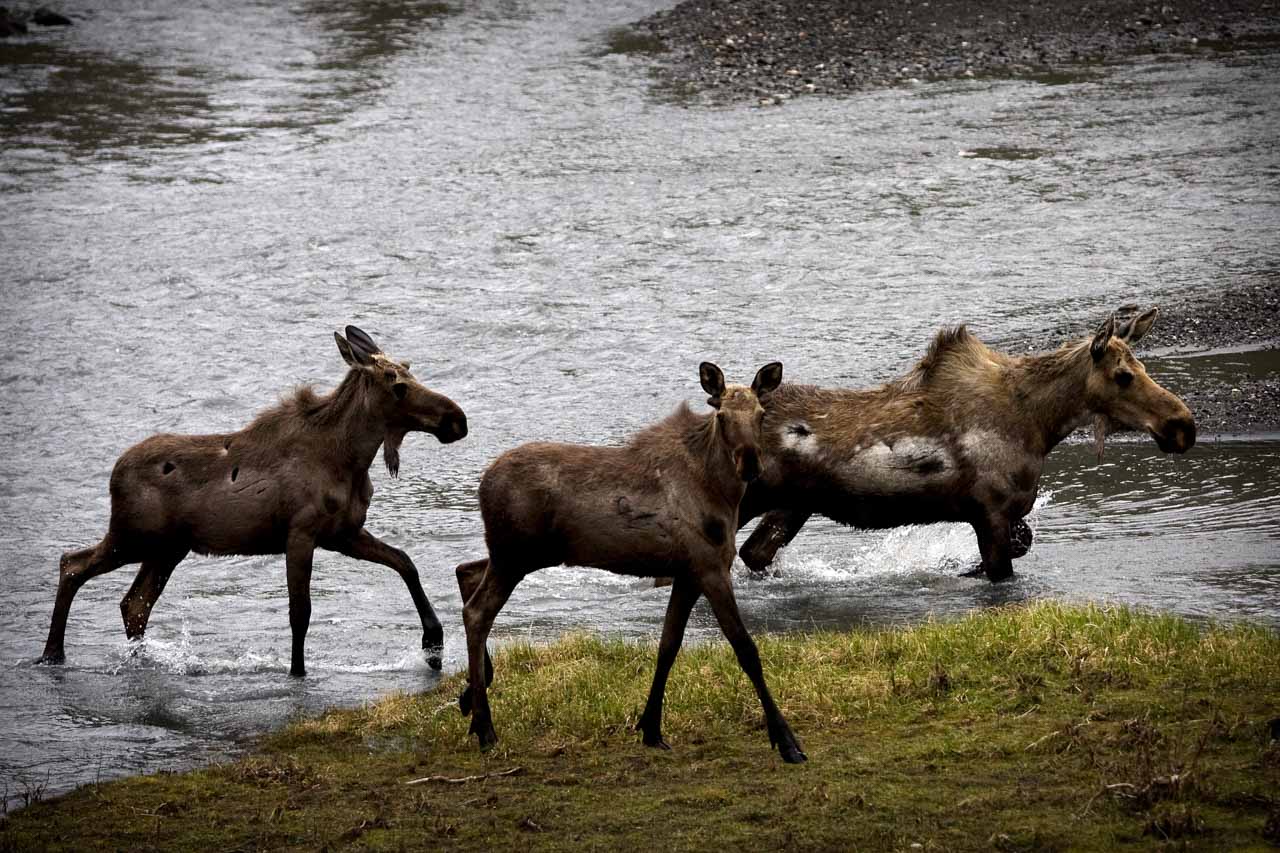
Moose are much more abundant in America’s national parks than both bears and mountain lions.
In fact, in the mountain parks of the northern states and Alaska, there are literally hundreds of thousands of moose. The total number of moose in the United States is estimated at around 300,000.
This, of course, makes it much easier for you to run into a moose while hiking than encountering one of the much less common grizzly bears or elusive mountain lions.
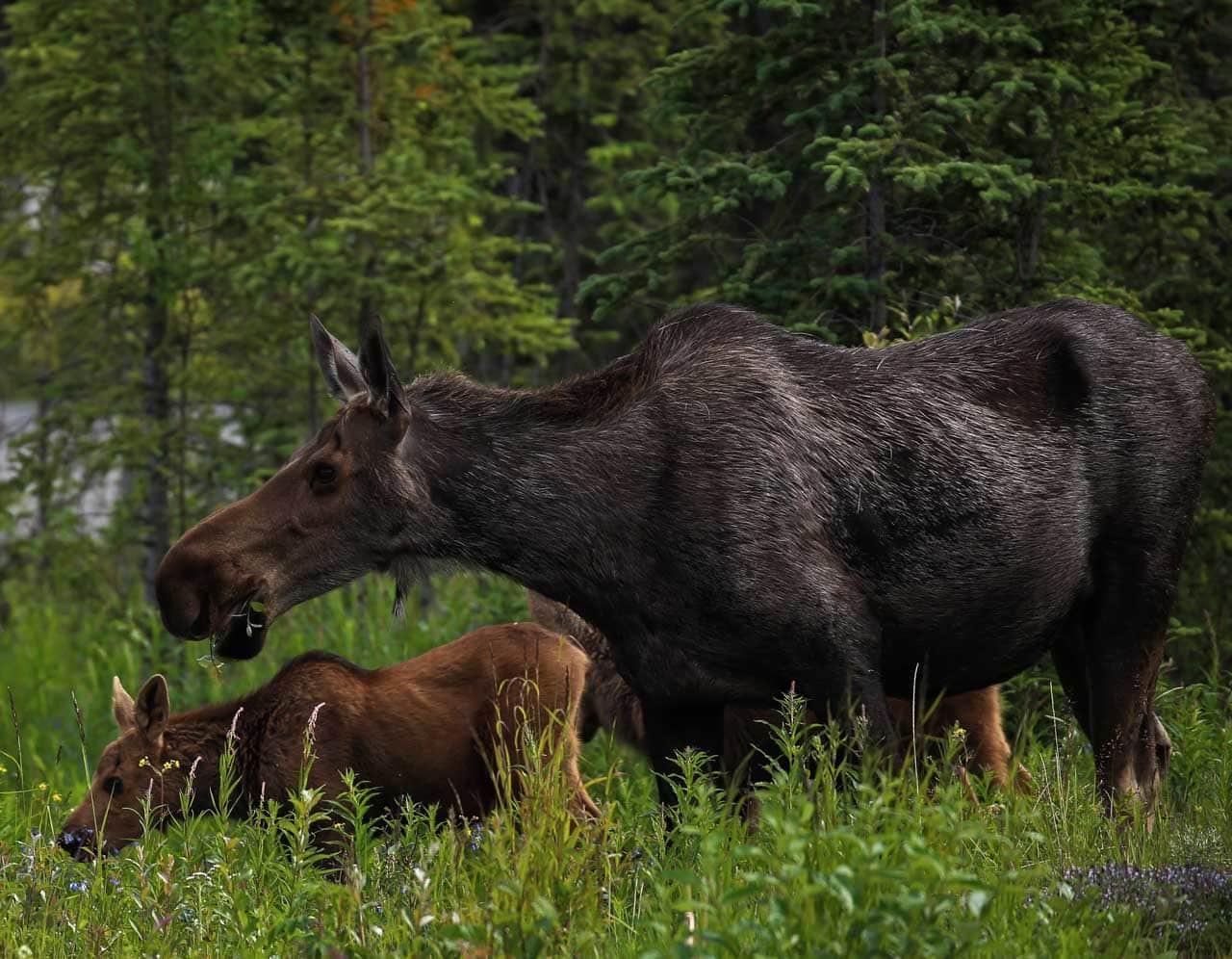
This moose safety while hiking post contains affiliate links. You can read more about our Terms of Use / Disclosure here.
How to Act During a Moose Encounter in the Wild
Moose are often casually browsing a stand of trees or hanging out along the shores of a pond or lake, which are also common hiking trail locations.
Even though they’re one of North America’s largest land animals, moose can be surprisingly quiet and invisible. Their brown fur blends perfectly with the natural colors of their preferred forest environment.
Additionally, unlike many other large mammals, moose tend to stand their ground when other animals, including humans, approach. This greatly increases the chance of a surprise moose encounter.
Therefore, one of the best tips to avoid a moose attack is to pay close attention to your surroundings. Never hike with earphones or headphones, but listen carefully to the sounds around you. Look around.
This is especially important near ponds, lakes and streams and in thickets of willows, which are all prime moose habitats.
So, what to do if you do see a moose?
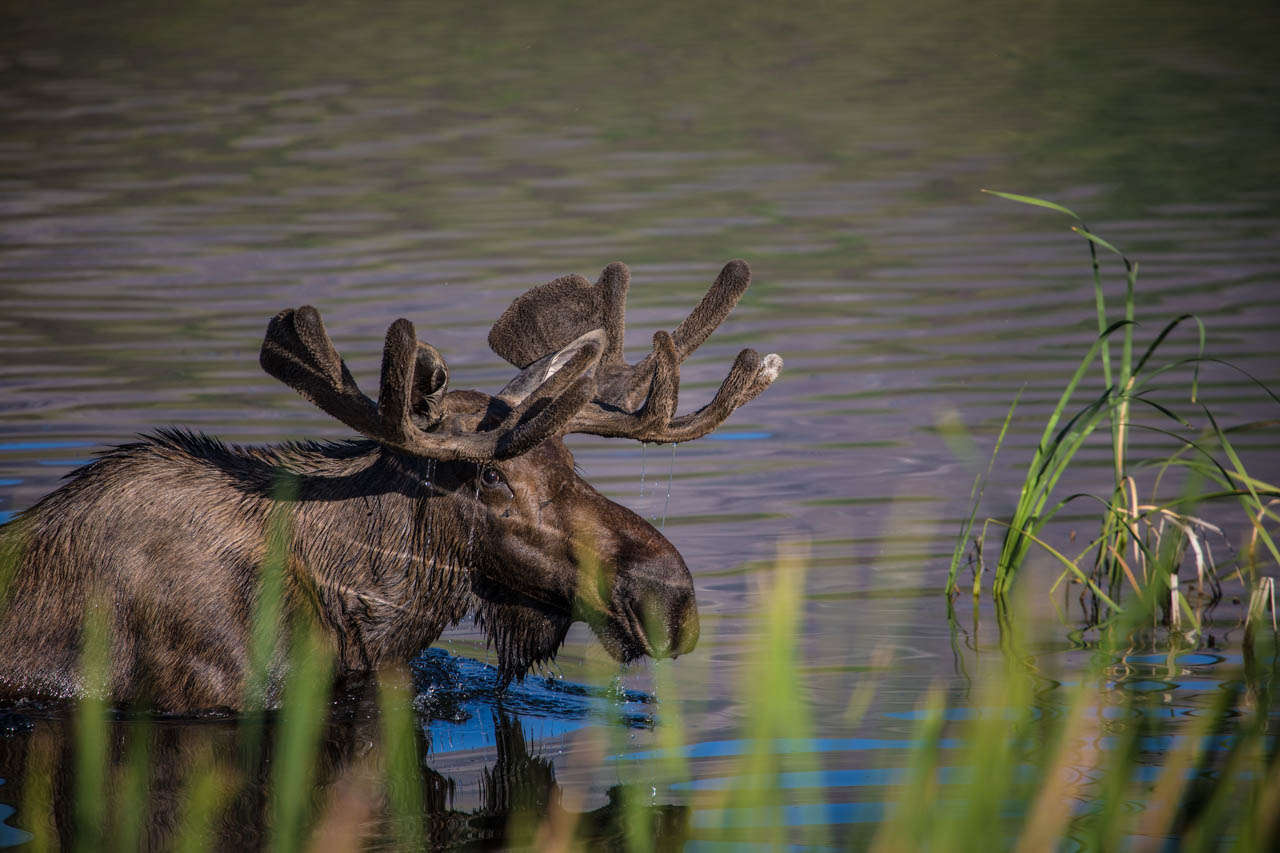
What to Do When You Encounter a Moose While Hiking
First of all, if you’ve spotted the moose from a distance, keep it that way. Do not approach the animal. In national parks, it’s the law to stay at least 25 yards (or meters) from a wild moose anyway.
If you see it’s a cow moose with a calf, it’s smart to increase that distance even more. Cows are extremely protective of their young and won’t hesitate to charge if they perceive you as a threat.
Second, if the moose hasn’t yet noticed you, don’t try to get its attention. Be quiet and, if you’re far enough away from it, continue hiking down the trail.
If the moose did notice you, on the other hand, you have to convince it you’re not a threat. Talk to the animal in a soft voice and slowly move out of the area. Don’t act aggressively during a moose encounter, never briskly wave your arms or shout.
Third, watch for signs indicating that the moose is agitated. The most obvious signs are laidback ears and upright hackles. If the moose watches you intensively, that may also be a sign you’re too close and are considered a threat.
Therefore, if you notice that the animal is upset, you should leave the area right away, calmly and quietly.
In the unfortunate, but not unlikely, case the moose charges you, there are two things you can do: run or find cover!
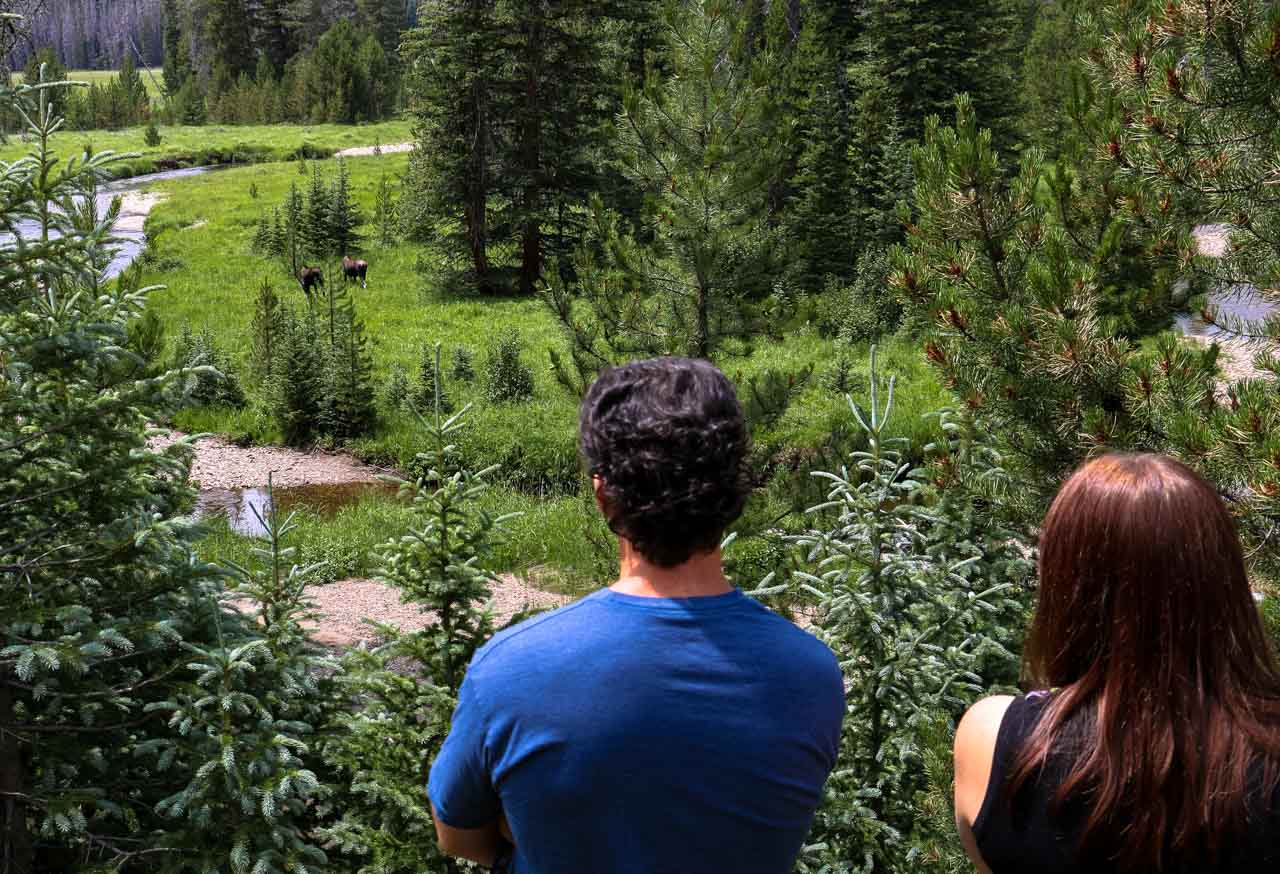
What to Do When a Moose Attacks
An agitated moose may charge you, which, considering the sheer size of the animal, can be a terrifying experience. Luckily, however, most moose charges are bluff charges—a warning that it’s better for you to leave.
Even though it might just be a “bluff” charge, it’s still a warning you shouldn’t ignore. The second charge could be an actual attack.
Either way, bluff charge or moose attack, you should get out of the area immediately. You really don’t want to mess with an angry moose.
It’s important to note here that, unlike with black bears, grizzly bears and mountain lions, it’s totally okay to run from a moose.
Since they’re herbivores, running away won’t trigger a predatory chase response. A charge by a moose is always defensive and it’s very unlikely they’ll chase you down the trail. Once you’re out of their immediate vicinity, they should go back to what they were doing.
If you’re not able to run, try to find cover behind a solid object, which could be anything from a car to a large tree.
In case you get knocked down by an aggressive moose, you should curl up into a ball and remain motionless. Protect your head and neck with your arms. Don’t fight back. You won’t win anyway and that will only prolong the attack.
Once the moose thinks you’re no longer a threat, it’ll back away. Don’t get up right away, but stay still for a while until the animal is at a safe distance.

Recommended Book: Moose: Crowned Giant of the Northern Wilderness
Moose Safety Summary
So, to sum up what to do when you encounter a moose while hiking, these are the main things to remember:
- Pay attention to your surroundings, especially in thickets of willows and near ponds, lakes and streams.
- If the moose hasn’t noticed you, keep your distance and continue on your hike (or turn back if the trail leads toward the animal).
- If the moose has noticed you, talk to it calmly and softly while also keeping your distance. Either continue on your hike or turn back if the trail leads toward the animal.
- Always stay at least 25 yards (or meters) from a wild moose.
- Never act aggressively.
- If the moose is agitated and looks like it may attack you, run away or take cover behind a solid object. Do not stand your ground.
- It’s alright to run from a moose!
- If the moose attacks and you fall down, curl up into a ball and protect your head and neck with your arms.
Moose Behavior & Biology FAQs
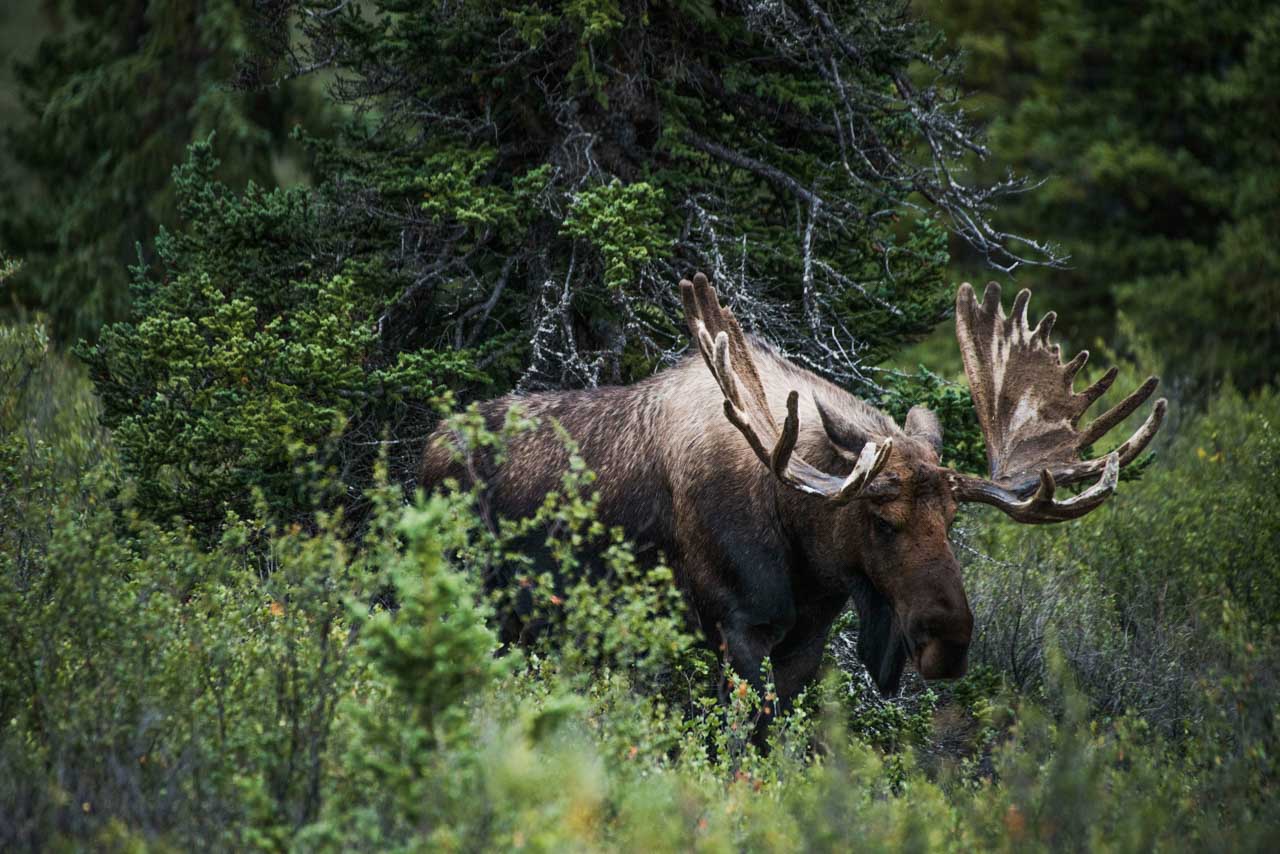
What Does a Moose Look Like?
The largest member of the deer family, moose (Alces alces) are easily recognized by their long head and large nose, protruding ears and long legs. Male moose have large antlers, which is one of the species’ most distinguishable features.
Moose have colors that vary from golden brown to nearly black, with most individuals having dark brown fur.
What Does a Moose Eat?
The diet of moose consists mainly of so-called browse, which are the twigs and leaves of woody plants. This includes trees like mountain ash, maple, birch, aspen and willow.
Another important part of a moose’s sustenance is aquatic plants, such as water lilies and pondweeds, which contain more sodium than woody plants. This is why you can often find moose near lakes and ponds.
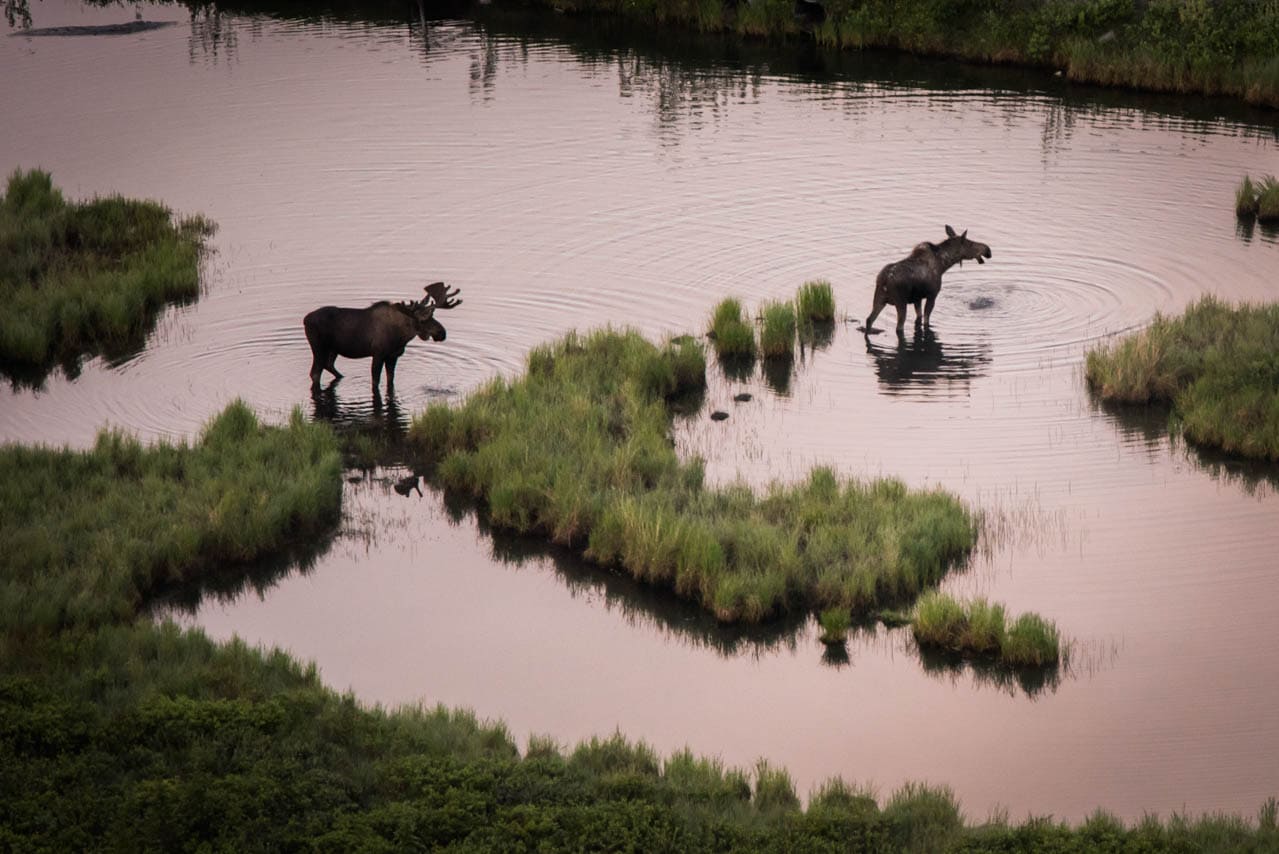
How Fast Can a Moose Run?
Adult moose can run faster than 30 miles per hour (50 km/h). While this means that no human can outrun a moose, running away from an aggressive moose is still a solid moose safety tactic if you can find some cover.
How Big Do Moose Get?
Moose are the largest member of the deer family. Seeing a moose from up close can be downright imposing.
Adult moose stand between 4.5 and 7 feet at the shoulder, depending on the sex. The average shoulder height of a wild moose is 6 feet, which is a full foot taller than the next-largest deer species—the elk or wapiti.
On average, adult male moose (“bulls” older than 5.5 years) weigh about 1,100 pounds, while adult female moose (“cows” older than 3.5 years) weigh 830 pounds.
Are Moose Dangerous?
Moose aren’t usually very aggressive, so why do moose attack humans? The only reason why a moose would charge a human is if it perceives the human to be a threat to its own (or its calf’s) safety.
This often happens when hikers approach a moose too closely, whether by accident or intentionally. Additionally, cow moose with a calf are also fiercely protective and will defend their calf against any perceived threat.
An attack or charge during moose encounter is always defensive.
This means that if you can leave the area quickly, you should be fine. Moose typically won’t chase people over a long distance.
So, my main moose safety tip is: give moose space and leave the area if the animal appears agitated.
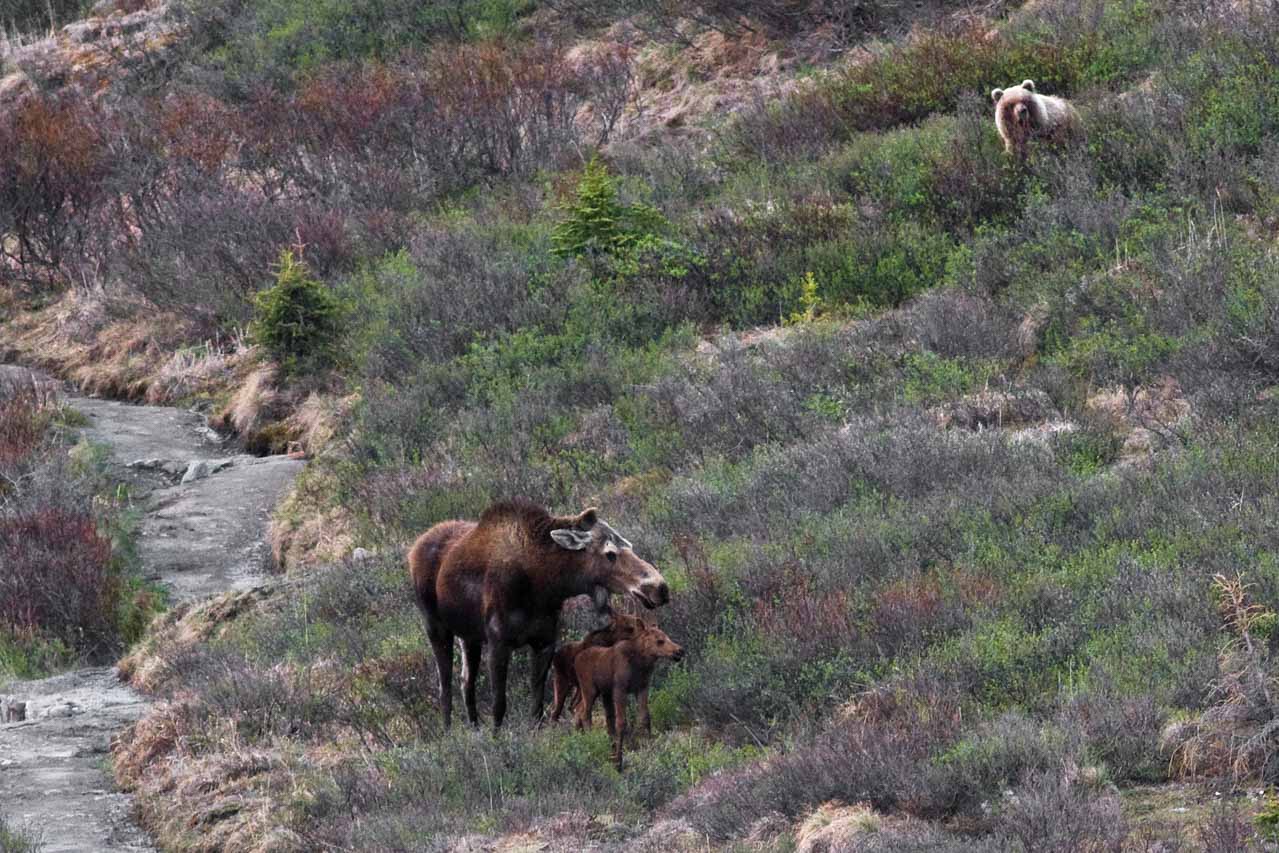
Are Moose More Dangerous Than Bears?
Although this is basically comparing apples with oranges, it is a fact that moose do injure more people than bears in Alaska. Both black bears and grizzly bears are predators and may stalk their prey. Attacks by these animals are far more serious than moose attacks.
On the other hand, since there are so many more moose in the United States than bears, moose encounters while hiking are much more common.
So, moose injure more people, but that’s basically because there are more moose. Another thing to consider is that a lot of moose-related injuries are the result of car accidents.
Moose are deer, which are notorious for not running from cars at night. Simply because moose’s legs are so tall, if you hit a moose with your car, the heavy animal will fall right through your windshield. This is a major cause of injuries and even deaths.
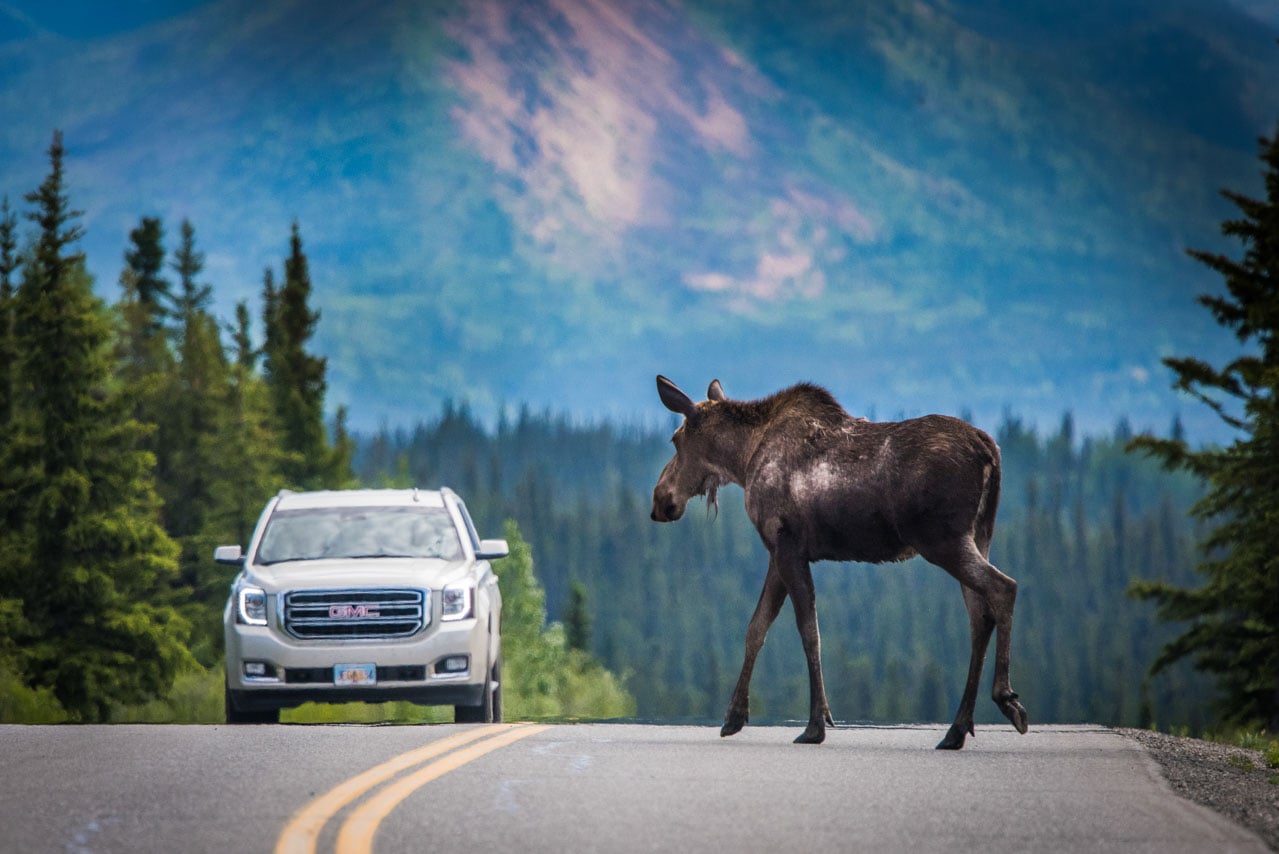
Where to See Wild Moose in the United States
You can have a moose encounter in nineteen U.S. states, from Washington to Wyoming and from Colorado to Vermont.
In Alaska, home to the United States’ largest moose population, there are no fewer than 175,000 to 200,000 moose. Of the lower 48 states, Maine has the biggest population of moose with between 60,000 and 70,000 individuals.
These are some amazing parks to see moose in the wild:
- Chugach State Park, Alaska
- Denali National Park, Alaska
- Isle Royale National Park, Michigan
- Kenai Fjords National Park, Alaska
- Glacier Bay National Park, Alaska
- Glacier National Park, Montana
- Grand Teton National Park, Wyoming
- Katahdin Woods and Waters National Monument, Maine
- Katmai National Park, Alaska
- Rocky Mountain National Park, Colorado
- Yellowstone National Park, Wyoming, Montana and Idaho

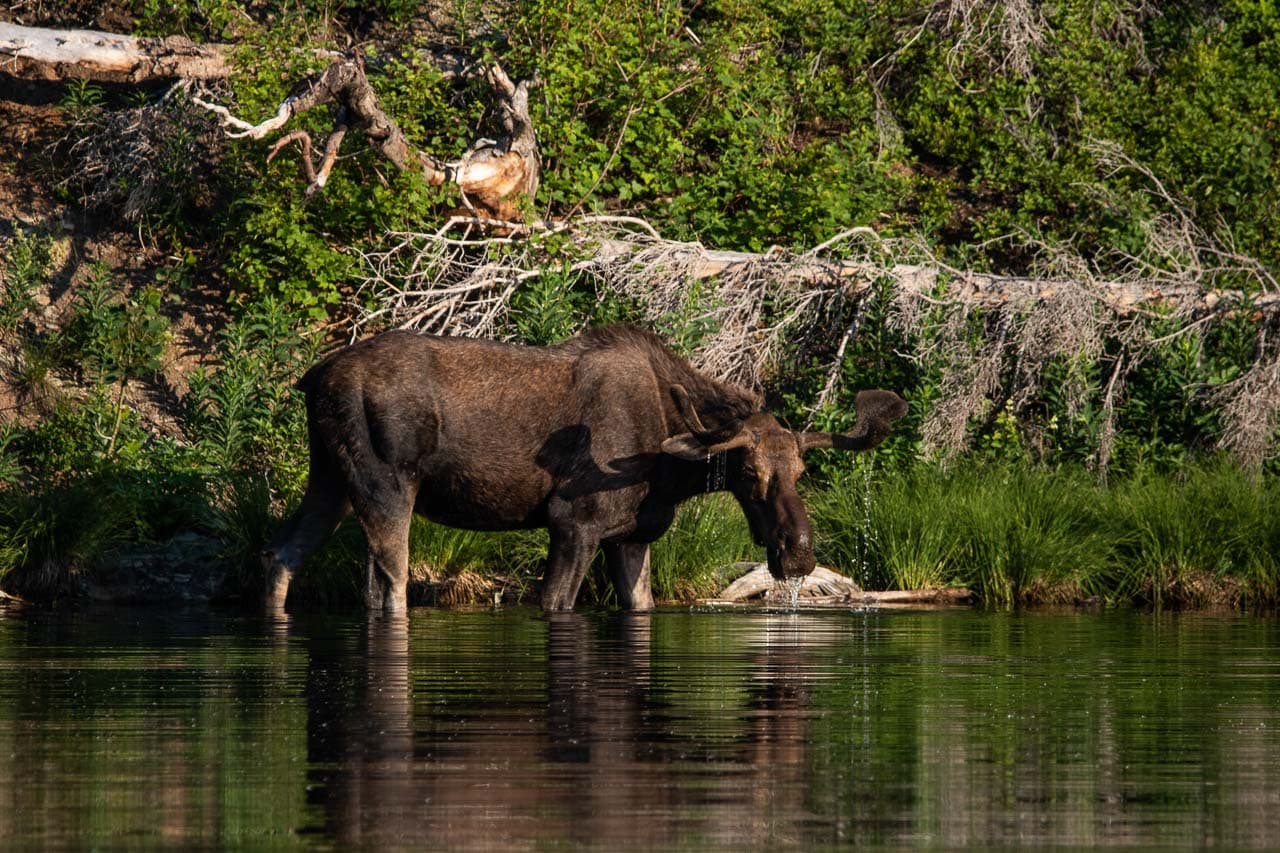
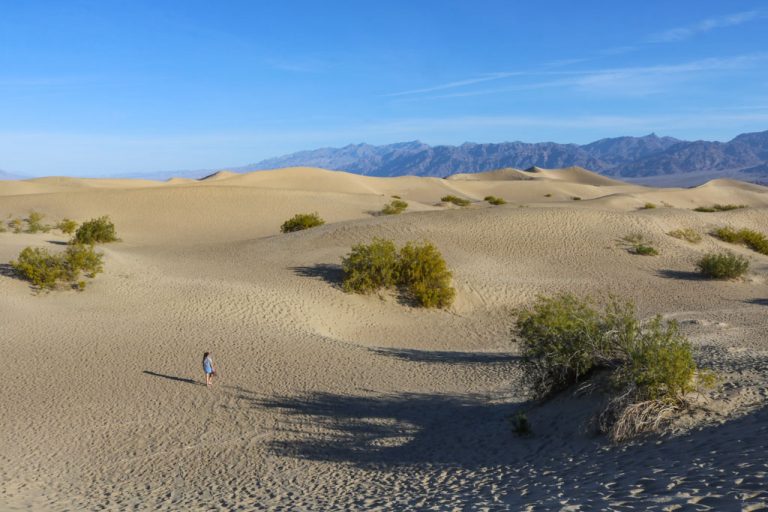




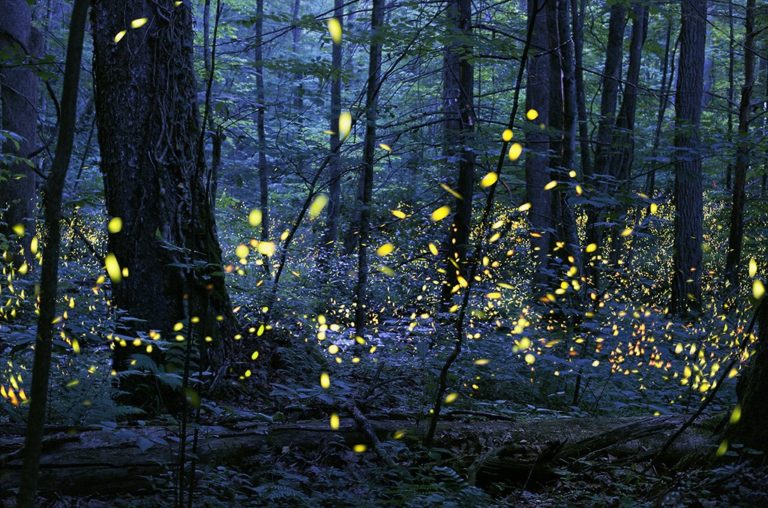
I have seen moose several times: from the car, from my kitchen window, while walking the dog (most concerning), and while hiking or backpacking. I agree with the advice here: stay calm, back away if the moose is staring at you intently, give the animal its space. If you have a dog get out quickly. Try to keep the dog from noticing the moose, turn it around and walk the other direction, quickly. If the moose charges then drop the leash and run away. Your dog’s life is not more important than yours.
Thanks for your comment, Perry! Seeing a moose is always a thrilling experience, but yes, it’s also potentially very dangerous. Giving wild animals space is always a good idea.
My dogs and I were hiking near big sky Montana. Out of the blue a cow and her calf charged us. I dropped to the ground and protected myself while my dogs barked. I was lucky to get away with only a bloody nose while my dogs
avoided injury. Stay vigilant
Glad you didn’t get hurt, Chase. Even though they’re so big, moose can be surprisingly quite and unnoticeable sometimes. Always stay alert!
A moose came right up on us in northern colorado near a mountain lake. He came out of some trees behind us and got within 10 feet. It was a very large, nearly black, Bull and it was the largest animal I’ve ever seen (outside of a zoo). He was very quiet and hard to notice and he noticed us before we noticed him and we quickly and calmly moved down the shoreline to get some distance from him. He drank from the lake and hung out for about 20 minutes before moving up the hill from the lake. We learned his routine over the course of our few days there and knew he would pop out for a drink about twice per day. It was very scary to be so close but he could’ve cared less about our presence. I am SO glad we did not have our rambunctious dogs with us at the time. I had JUST put them back in the camper not 15 minutes before.
What an amazing experience, Liz! Good thing your dogs weren’t with you, though, that could’ve ended differently. It’s amazing how these gigantic animals can still remain virtually invisible. I ran into a moose at Jenny Lake in Grand Teton, which appeared seemingly out of nowhere. It also went about its business apparently without caring about my presence. I kept a decent distance, though!
I was on a trail run this morning in Idaho and was running between to mountains in an open meadow with trees on both side when a bull moose ran up to me. I paused and realized I had never read up on what to do in the case of a moose encounter, however I had read what to do in the case of a bear encounter and proceeded to unclip my hydration vest. I swung it around while making loud gutteral chimp sounds as he sat and stared at me. He flipped his head up and grunted, then I saw his female and calf run into the trees and he turned and followed. I then turned around and ran in terror as I continued to make loud chimp sounds in case anyone else thought of approaching me. Only now am I learning that is the exact opposite of what I should have done and feel REALLY lucky to have challenged the moose and won.